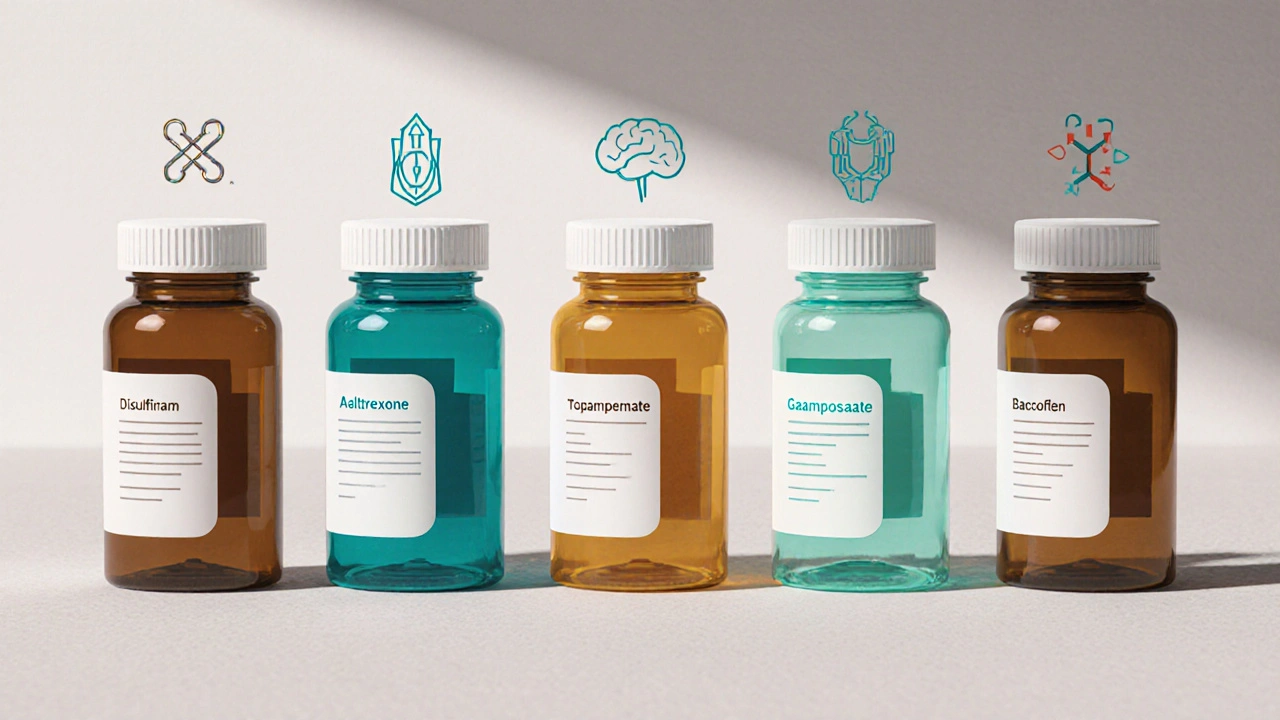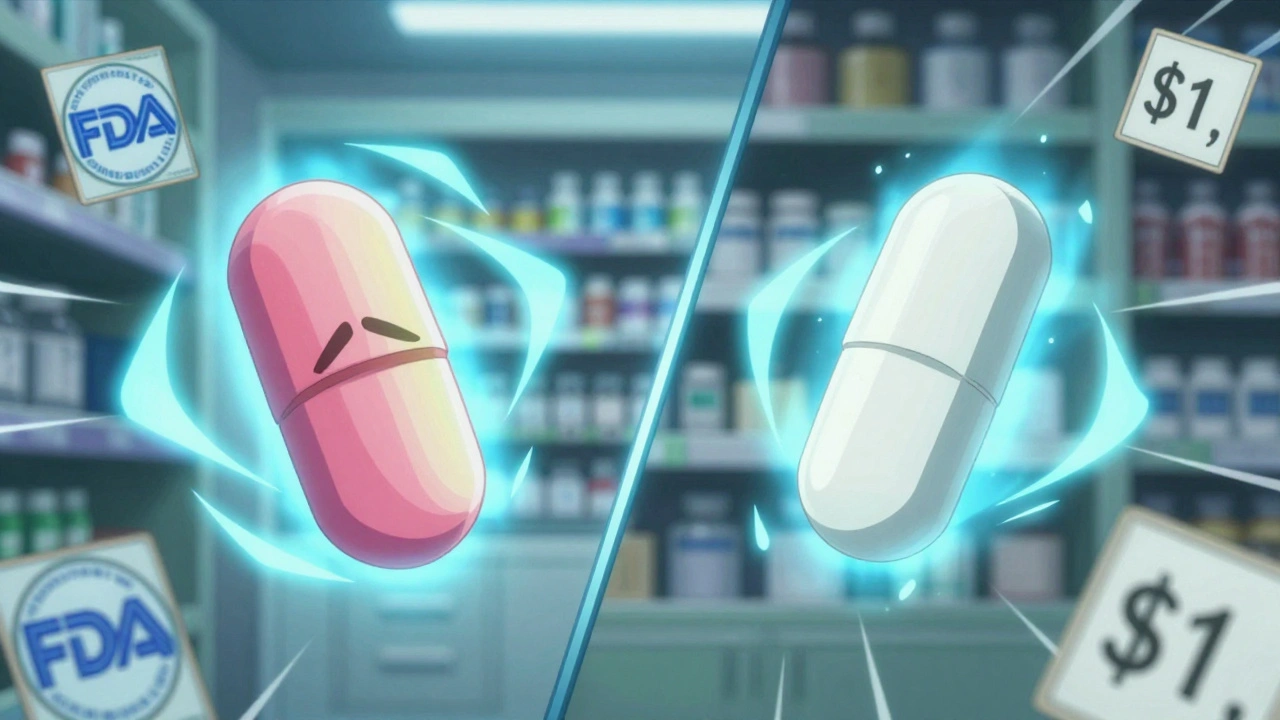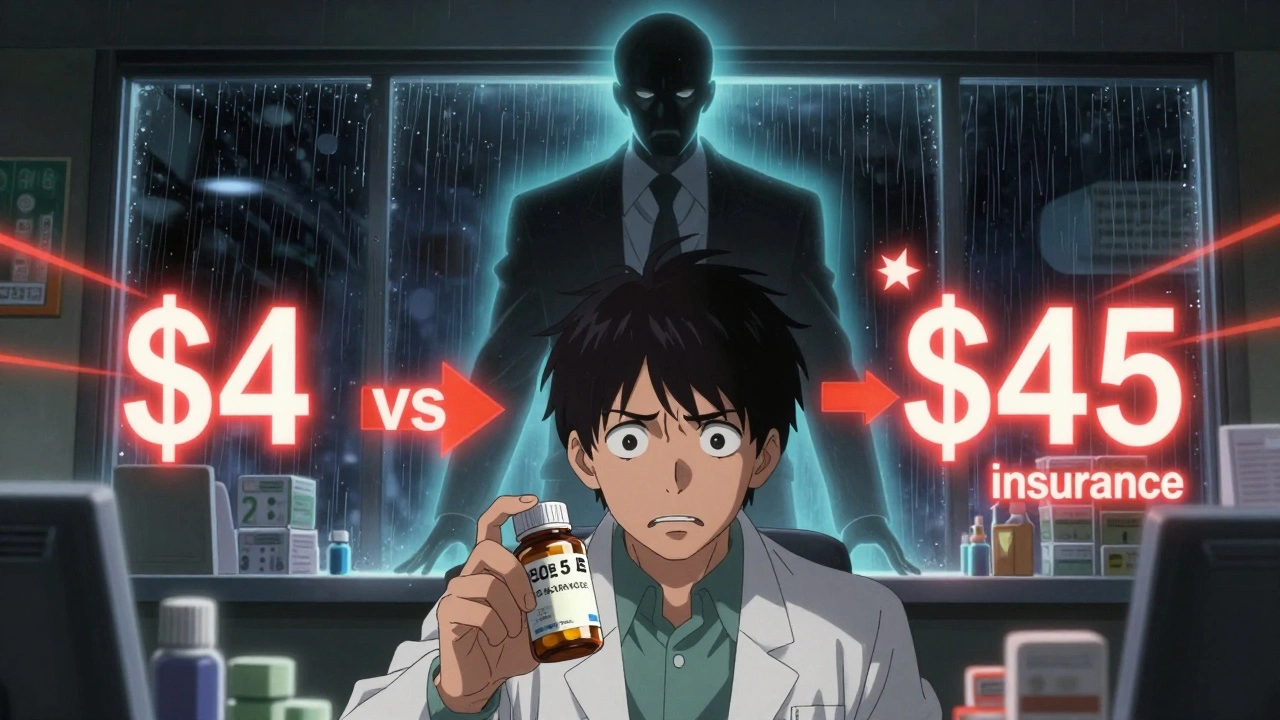Disulfiram (Antabuse) vs Alternatives: A Detailed Comparison

Alcohol Treatment Medication Comparison Tool
Find Your Best Treatment Option
Select your top priority to see which medications are most suitable for your situation.
Recommended Medications
When it comes to treating alcohol use disorder, the market is crowded with options that promise to curb cravings or make drinking physically unpleasant. Disulfiram is the drug many remember from TV dramas - the one that turns a glass of wine into a night of nausea. But is the “make‑you‑sick” approach still the best choice in 2025? This guide breaks down how Disulfiram stacks up against the most common alternatives, helping patients and clinicians decide which medication fits their situation.
What is Disulfiram (Antabuse) and How Does It Work?
Disulfiram is a medication that belongs to the class of aldehyde dehydrogenase inhibitors. When a person on Disulfiram consumes alcohol, the drug blocks the enzyme that normally converts acetaldehyde into acetate. Acetaldehyde builds up, leading to flushing, throbbing headache, low blood pressure, and vomiting - a reaction that can last for up to an hour. The theory is simple: the fear of these symptoms deters drinking.
Typical dosing starts at 250mg once daily, taken after a 12‑hour alcohol‑free period. Blood levels rise quickly, and the disulfiram effect can linger for 1‑2 weeks after stopping the drug because it binds irreversibly to the enzyme.
Key Alternatives to Disulfiram
Over the past two decades, three oral agents have become first‑line in many guidelines: Naltrexone, Acamprosate, and Topiramate. Off‑label options like Gabapentin and Baclofen are also used, especially when patients cannot tolerate the first three.
- Naltrexone - an opioid antagonist that blocks the rewarding effects of alcohol by inhibiting µ‑opioid receptors in the brain.
- Acamprosate - a calcium‑sulfate‑like compound that stabilizes glutamate signaling, reducing post‑withdrawal cravings.
- Topiramate - an anticonvulsant that modulates GABA and glutamate, lowering the desire to drink.
- Gabapentin - originally for seizures, it helps some patients with sleep‑related alcohol cravings.
- Baclofen - a GABA‑B agonist that can curb heavy drinking when other meds fail.
How the Medications Compare
| Medication | Mechanism | Typical Dose | Main Benefits | Common Side Effects | Key Contraindications |
|---|---|---|---|---|---|
| Disulfiram | Aldehyde dehydrogenase inhibition | 250mg once daily | Strong aversive effect, low cost | Headache, metallic taste, skin rash | Severe liver disease, current alcohol use |
| Naltrexone | Opioid receptor antagonism | 50mg daily (oral) or 380mg monthly (injectable) | Reduces craving, works while drinking | Nausea, dizziness, hepatic enzyme rise | Acute hepatitis, opioid dependence |
| Acamprosate | Glutamate modulation | 666mg three times daily | Helps maintain abstinence, safe for liver | Diarrhea, abdominal pain, metallic taste | Severe renal impairment (eGFR <30ml/min) |
| Topiramate | GABA enhancement & glutamate inhibition | 50‑200mg daily (titrated) | Strong reduction in heavy‑drinking days | Cognitive slowing, paresthesia, weight loss | Pregnancy, metabolic acidosis |
| Gabapentin | Calcium channel modulation | 300‑600mg three times daily | Improves sleep‑related cravings | Drowsiness, edema, dizziness | Severe renal disease, hypersensitivity |
| Baclofen | GABA‑B receptor agonist | 30‑80mg three times daily | Reduces drinking intensity | Weakness, dry mouth, sedation | Severe hepatic insufficiency |

Decision Criteria: When to Choose Disulfiram
Even with newer agents, Disulfiram still shines in specific scenarios. Use the following checklist to see if it fits:
- Motivation to stay abstinent - patients who understand the aversive reaction often adhere better.
- Reliable supervision - family or clinic visits can reinforce compliance.
- Good liver function - baseline AST/ALT must be less than three times the upper limit of normal.
- No risk of accidental alcohol exposure - includes hidden alcohol in sauces or medications.
- Cost sensitivity - Disulfiram is generally cheaper than month‑long injectable naltrexone.
If any of these points raise red flags, consider a different option.
Choosing an Alternative: Matching Patient Profiles
Here’s a quick way to map typical patient characteristics to the most suitable drug:
- Heavy drinkers who can’t tolerate the “sick‑drink” effect - Naltrexone (especially the injectable formulation) offers craving reduction while allowing occasional drinks.
- Patients with liver disease but good kidney function - Acamprosate is safe because it’s renally cleared.
- Those needing strong reduction in binge episodes - Topiramate has the best data for cutting heavy‑drinking days.
- Individuals with insomnia or anxiety‑driven cravings - Gabapentin or Baclofen can address the underlying sleep disturbance.
Practical Tips for Clinicians and Patients
Implementing any of these medications successfully requires more than a script. Follow these actions:
- Baseline labs: Check liver enzymes (AST, ALT), renal function (eGFR), and complete blood count.
- Education session: Explain the mechanism, expected timeline, and what to do if side effects appear.
- Set a drinking‑free window before starting Disulfiram (at least 12hours) and before each dose of Naltrexone (24hours).
- Adherence monitoring: Use pill counts, pharmacy refill data, or digital reminders.
- Safety net: Provide a rescue plan (e.g., emergency contact) if the aversive reaction occurs unexpectedly.

Potential Pitfalls and Safety Considerations
Even well‑chosen meds can go sideways. Keep an eye on these risks:
- Disulfiram-alcohol reaction can be life‑threatening if a patient ingests large amounts of alcohol unintentionally. Prompt medical evaluation is essential.
- Naltrexone hepatotoxicity is rare but warrants monthly liver function tests during the first three months.
- Acamprosate renal dosing - reduce by 50% if eGFR is between 30‑50ml/min.
- Topiramate cognitive side‑effects may affect driving or work performance; start low and increase slowly.
- Gabapentin misuse has been reported in people with a history of substance abuse; monitor for escalating doses.
Future Directions in Alcohol‑Use Medication
Research is moving toward combination therapy-pairing an opioid antagonist with a glutamate modulator-to hit cravings from multiple angles. Trials combining Naltrexone and Acamprosate, or adding low‑dose Topiramate to Disulfiram, show promise. Until such regimens become standard, clinicians must tailor single‑agent therapy to each patient’s medical profile and lifestyle.
Frequently Asked Questions
Can I drink alcohol while taking Disulfiram?
No. Even a small amount of alcohol can trigger a severe reaction, including rapid heart rate, vomiting, and low blood pressure. The purpose of Disulfiram is to create a strong deterrent.
How quickly does Naltrexone start reducing cravings?
Oral Naltrexone can begin to blunt the rewarding effects of alcohol within a few days, but many clinicians wait 2‑4 weeks to assess full impact. The injectable formulation provides steady levels for a month from the first dose.
Is Acamprosate safe for someone with mild liver disease?
Yes. Acamprosate is not metabolized by the liver, making it a preferred choice for patients with compromised hepatic function, as long as kidney function is adequate.
What should I do if I experience a Disulfiram reaction?
Seek emergency medical care immediately. While most reactions are self‑limiting, severe hypotension or cardiac arrhythmias require hospital monitoring.
Can these medications be used together?
Combination therapy is being studied, but routine co‑prescribing is not yet standard. Some clinicians pair Naltrexone with Acamprosate for additive effects, but they must monitor for overlapping side‑effects.






Comments
Tina Johnson
October 12, 2025 AT 00:53Disulfiram’s pharmacology is unequivocally simple: it blocks aldehyde dehydrogenase, causing acetaldehyde accumulation when alcohol is ingested. The resulting vasodilatory response-flushing, tachycardia, and nausea-has been documented in peer‑reviewed trials since the 1950s. Clinicians must screen for severe hepatic impairment because the drug is metabolised hepatically, and its contraindication list expressly includes active alcohol consumption. Moreover, dosing at 250 mg per day yields a plasma half‑life sufficient to sustain enzyme inhibition for up to two weeks after cessation.
Sharon Cohen
October 14, 2025 AT 08:26It feels like stepping onto a stage where every drink becomes an antagonist, a tragic hero forced to watch the curtain fall on his own cravings. The drama of the reaction can be a powerful narrative catalyst for change, though not everyone finds such theatricality therapeutic.
Rebecca Mikell
October 16, 2025 AT 10:26I appreciate the balanced overview; the table makes it easy to compare side‑effect profiles, and the emphasis on safety for liver and kidney patients is spot on. Sharing real‑world dosing schedules also helps clinicians tailor treatment without overwhelming the reader.
Ellie Hartman
October 18, 2025 AT 20:46For anyone hesitant about the “make‑you‑sick” approach, we can view disulfiram as a behavioral contract reinforced by physiology. Pairing it with counseling maximises adherence, especially for patients who value a clear, tangible deterrent.
Alyssa Griffiths
October 20, 2025 AT 14:26One must consider the hidden agenda; why do pharmaceutical companies push naltrexone so aggressively, while the cheap, generic disulfiram-an old‑world remedy-remains under‑advertised???; there is a financial incentive, a regulatory loophole, and a cascade of off‑label prescriptions that deserve scrutiny; nonetheless, the data on efficacy remains solid, albeit clouded by economic bias.
Jason Divinity
October 23, 2025 AT 03:33From a nationalist perspective, it is shameful that we allow foreign‑manufactured compounds to dominate our formularies when a domestically produced, low‑cost antidote exists. The biochemical elegance of disulfiram-irreversibly binding to enzyme active sites-embodies a philosophical principle: simplicity triumphs over complexity, even in pharmacology.
andrew parsons
October 25, 2025 AT 08:20🧐📚 Disulfiram remains a cornerstone of abstinence therapy; its mechanism is well‑documented, and the side‑effect profile is predictable-yet clinicians must enforce strict abstinence prior to initiation!; adherence monitoring is non‑negotiable, otherwise the therapeutic alliance collapses.
Sarah Arnold
October 28, 2025 AT 03:00✅ In practice, I’ve seen patients on disulfiram maintain sobriety for over a year when combined with weekly group therapy; the cost‑effectiveness alone makes it attractive for under‑insured populations. 🚀
Rajat Sangroy
October 30, 2025 AT 02:13Give disulfiram a chance and watch the cravings evaporate-if you respect the liver limits, the results can be striking.
dany prayogo
November 1, 2025 AT 09:46Let us embark on an exhaustive exposition of why disulfiram, despite its theatrical side‑effects, retains a unique niche in modern alcohol use disorder management. First, the pharmacodynamic certainty it offers is unparalleled; the enzyme blockade is irreversible, guaranteeing that any lapse results in an unmistakable physiological warning. Second, the economic argument cannot be ignored-generic disulfiram tablets cost a fraction of a cent, making long‑term therapy feasible for low‑income patients. Third, the psychosocial impact of a known aversive reaction functions as a cognitive deterrent, reinforcing abstinence through fear conditioning. Fourth, the drug’s pharmacokinetics allow clinicians to schedule dosing once daily, simplifying adherence compared to thrice‑daily regimens like acamprosate. Fifth, disulfiram does not interfere with the central reward pathways, avoiding the mood alterations sometimes observed with naltrexone. Sixth, its safety profile, while contraindicated in severe hepatic disease, is well‑characterized and manageable with routine liver function monitoring. Seventh, the drug’s low incidence of serious adverse events has been documented across multiple longitudinal studies spanning decades. Eighth, patient education about the disulfiram–alcohol reaction can empower individuals to make informed choices, thereby enhancing therapeutic alliance. Ninth, the drug’s low cost reduces the financial burden on healthcare systems, which is especially relevant in resource‑constrained settings. Tenth, disulfiram can be combined with psychosocial interventions, such as cognitive‑behavioral therapy, to bolster outcomes synergistically. Eleventh, its efficacy is supported by meta‑analyses that demonstrate higher abstinence rates compared with placebo in carefully selected cohorts. Twelfth, the drug’s simple chemical structure facilitates generic production, ensuring a stable supply chain. Thirteenth, clinicians can titrate dosage based on patient tolerance, starting at 250 mg and adjusting as needed. Fourteenth, the disulfiram reaction is reversible after cessation, allowing patients to discontinue without lasting physiologic deficits. Fifteenth, the cultural familiarity of Antabuse in popular media may actually aid in patient acceptance, as the concept is already embedded in public consciousness. In sum, while newer agents offer cravings reduction, disulfiram’s unique blend of cost‑effectiveness, deterministic pharmacology, and behavioral reinforcement secures its relevance in the therapeutic armamentarium.
Wilda Prima Putri
November 3, 2025 AT 11:46Sure, the cheap pill works, if you can tolerate the taste.
Edd Dan
November 5, 2025 AT 22:06I think the metrology of the drug is sound, but some docor s forget to check the liver tests before startin.
Cierra Nakakura
November 7, 2025 AT 18:33Hey folks! 🌟 If you’re juggling work and recovery, disulfiram’s once‑daily dose can fit right into your lunch break. Just remember to stay alcohol‑free for at least 12 hours before the first pill, and keep a quick note of any side effects. It’s not a magic bullet, but paired with a supportive community it can be a solid pillar in your sobriety plan. 👍
Sharif Ahmed
November 10, 2025 AT 02:06In the grand theater of pharmacotherapy, disulfiram occupies the role of the stern arbiter, delivering cathartic reprisal upon the transgressor. Its austere mechanism, rooted in the inexorable accumulation of acetaldehyde, evokes a visceral reminder of the body's own rebuke. While contemporary agents court the audience with subtlety, the raw, unvarnished aversion of disulfiram commands attention, demanding reverence from both physician and patient alike.
Charlie Crabtree
November 12, 2025 AT 06:53Yo, if you’re on a budget, grab the generic, pop a pill, and let the “no‑drinks‑allowed” vibe do its thing 😎. Just keep your doc in the loop!
RaeLyn Boothe
November 14, 2025 AT 20:00Consider the legal ramifications of prescribing disulfiram without thorough informed consent; the documentation must reflect the patient’s awareness of the potential severe reactions.
Fatima Sami
November 16, 2025 AT 22:00While the medication is inexpensive, it is crucial that patients are educated about contraindications, especially regarding hepatic impairment.
Stephanie Jones
November 19, 2025 AT 05:33We are but shadows chasing the mirage of “control,” yet the disulfiram reaction forces us to confront the abyss of our cravings, reminding us that true liberty lies beyond the bottle.
Nathan Hamer
November 21, 2025 AT 07:33🌱 Embracing disulfiram can be seen as a commitment to self‑reflection; it pairs well with mindfulness practices, creating a holistic pathway toward lasting sobriety.